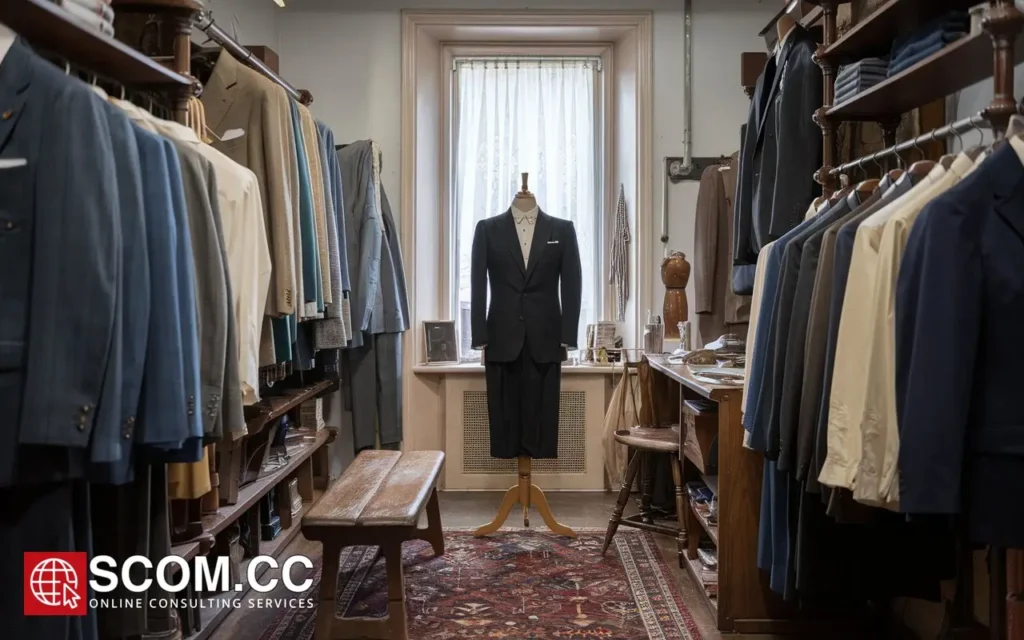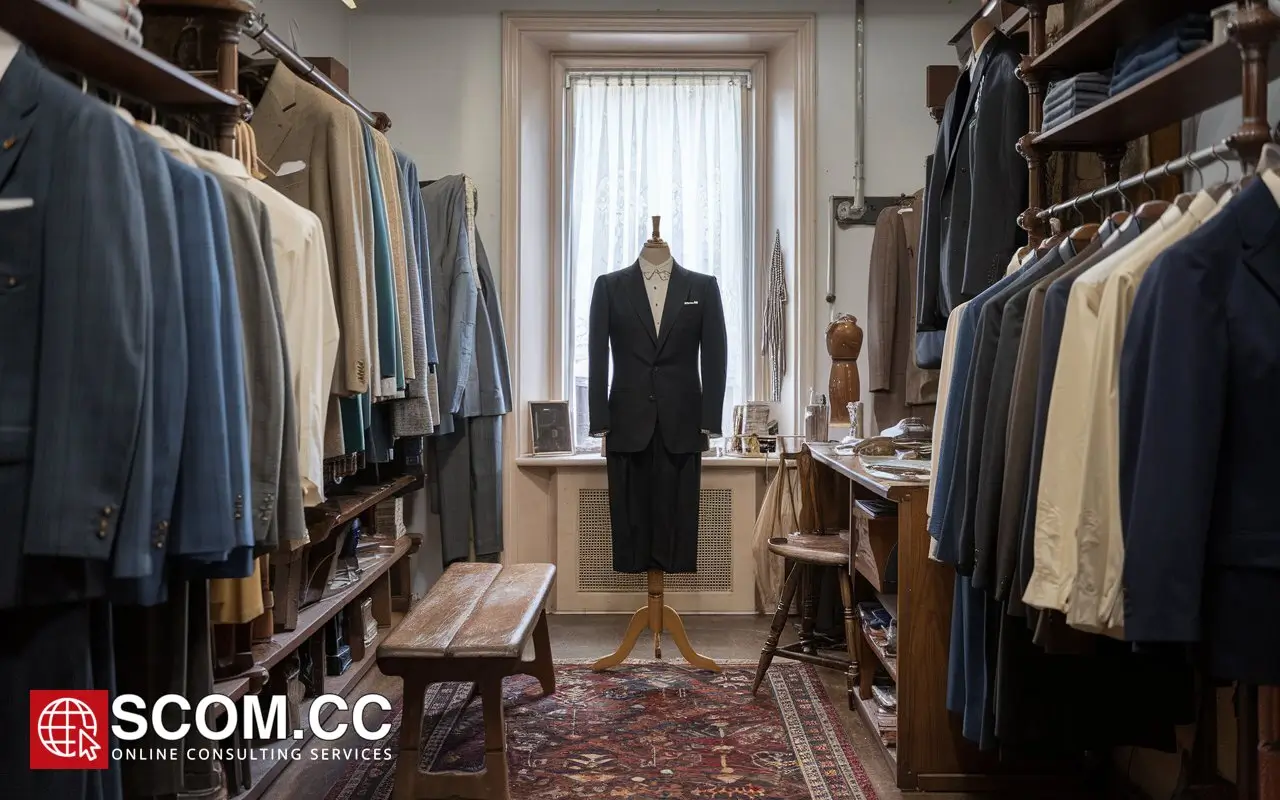What Historical Figures Made Significant Contributions to Tailoring?

- What Historical Figures Made Significant Contributions to Tailoring?
- Elias Howe: The Inventor of the Sewing Machine
- Charles Frederick Worth: The Father of Haute Couture
- Savile Row Tailors: The Iconic Tailors of London
- Dior and Chanel: Icons of 20th Century Fashion
- Elsa Schiaparelli: The Avant-Garde Tailor
-
FAQ
- 1. What was Elias Howe's major contribution to tailoring?
- 2. How did Charles Frederick Worth influence the fashion industry?
- 3. What is the significance of Savile Row in the tailoring world?
- 4. What was the New Look introduced by Christian Dior?
- 5. How did Coco Chanel change women's fashion?
- 6. What was Elsa Schiaparelli known for in the fashion world?
- 7. How did technological advancements impact tailoring in the 19th century?
- Conclusion: The Legacy of Tailoring Innovators
What Historical Figures Made Significant Contributions to Tailoring?
Introduction: Pioneers of the Tailoring Craft
The art of tailoring has been shaped by numerous historical figures whose contributions have profoundly influenced the evolution of fashion and garment making. From the introduction of innovative techniques to the establishment of iconic tailoring houses, these individuals have left an indelible mark on the world of tailoring. This article delves into the lives and achievements of key historical figures who have made significant contributions to tailoring, highlighting their enduring impact on the industry.
Elias Howe: The Inventor of the Sewing Machine
Revolutionizing Garment Production
Elias Howe (1819–1867) is renowned for his pivotal role in the development of the sewing machine. His invention, patented in 1846, was a groundbreaking advancement in garment production. Before Howe’s invention, garments were sewn by hand, a labor-intensive process that limited production speed and consistency.
Key Contributions:
- Invention of the Lockstitch Machine: Howe's sewing machine featured a unique lockstitch mechanism that improved stitch durability and precision.
- Mass Production: His machine enabled the mass production of garments, laying the foundation for the ready-to-wear fashion industry.
Howe’s invention revolutionized the tailoring industry, making high-quality garment production more efficient and accessible.
Charles Frederick Worth: The Father of Haute Couture
Establishing the Foundations of High Fashion
Charles Frederick Worth (1825–1895) is often celebrated as the father of haute couture. Worth, an English-born designer based in Paris, founded the House of Worth in 1858, which is considered the world’s first haute couture house. His innovative designs and business practices set new standards in the fashion industry.
Key Contributions:
- Introduction of the Couture Collection: Worth pioneered the concept of seasonal collections, showcasing his designs in elaborate fashion shows.
- Personalized Fashion: He introduced the practice of creating custom-made garments for high society clients, elevating the status of tailored clothing.
Worth’s legacy continues to influence modern fashion, establishing haute couture as a prestigious and influential aspect of the tailoring industry.
Savile Row Tailors: The Iconic Tailors of London
Crafting Timeless Elegance
Savile Row, a renowned street in London, has long been associated with bespoke tailoring and high-quality craftsmanship. While not a single individual, the collective contribution of the tailors on Savile Row has been instrumental in shaping modern tailoring practices.
Key Contributions:
- Bespoke Tailoring Tradition: Savile Row tailors are renowned for their bespoke tailoring services, offering meticulously crafted garments tailored to individual measurements and preferences.
- Influence on Fashion: The tailored suits and garments created on Savile Row have become synonymous with classic elegance and have influenced global fashion trends.
The legacy of Savile Row continues to represent the pinnacle of tailoring excellence, attracting clients from around the world seeking the finest bespoke garments.
Dior and Chanel: Icons of 20th Century Fashion
Innovative Designs and Tailoring Techniques
Christian Dior (1905–1957) and Coco Chanel (1883–1971) were two of the most influential designers in the 20th century, each making significant contributions to tailoring and fashion.
Christian Dior:
- The New Look: Dior’s 1947 collection, known as the New Look, featured voluminous skirts and fitted bodices, revolutionizing post-war fashion with a return to femininity and luxury.
- Tailoring Innovations: Dior's designs emphasized structured tailoring, with an emphasis on enhancing the female silhouette through the use of draping and couture techniques.
Coco Chanel:
- Revolutionizing Women's Fashion: Chanel introduced the concept of casual elegance with her simple yet sophisticated designs, including the iconic Chanel suit and little black dress.
- Tailoring Simplicity: Chanel’s approach to tailoring favored simplicity and comfort, making high fashion more accessible and practical for women.
Both Dior and Chanel have left lasting legacies, influencing modern tailoring with their innovative designs and approaches.
Elsa Schiaparelli: The Avant-Garde Tailor
Pushing the Boundaries of Fashion
Elsa Schiaparelli (1890–1973) was an Italian fashion designer known for her avant-garde approach to tailoring and fashion. Schiaparelli’s work was characterized by its bold and imaginative designs, often incorporating unconventional elements.
Key Contributions:
- Innovative Designs: Schiaparelli’s use of surrealist motifs and experimental fabrics challenged traditional tailoring conventions.
- Collaboration with Artists: She collaborated with prominent artists such as Salvador Dalí and Jean Cocteau, incorporating their artistic visions into her designs.
Schiaparelli’s avant-garde approach to tailoring and fashion paved the way for future designers to explore creative and unconventional styles.
Summary Table: Key Historical Figures in Tailoring
| Historical Figure | Contribution | Key Innovations | Impact on Tailoring |
|---|---|---|---|
| Elias Howe | Invented the sewing machine | Lockstitch mechanism, mass production | Revolutionized garment production and efficiency |
| Charles Frederick Worth | Founded the first haute couture house | Seasonal collections, custom-made garments | Established haute couture and personalized fashion |
| Savile Row Tailors | Premier bespoke tailoring hub | Precision tailoring, bespoke services | Defined high standards in bespoke tailoring |
| Christian Dior | Introduced the New Look | Structured tailoring with voluminous skirts | Influenced post-war fashion and women's silhouettes |
| Coco Chanel | Simplified women's fashion | Chanel suit, little black dress | Revolutionized women's fashion with elegance |
| Elsa Schiaparelli | Innovated with avant-garde designs | Surrealist motifs, experimental fabrics | Pushed boundaries of traditional tailoring |
FAQ
1. What was Elias Howe's major contribution to tailoring?
Elias Howe's major contribution was the invention of the sewing machine, which introduced the lockstitch mechanism. This innovation greatly improved the efficiency and precision of garment production, marking a significant advancement in tailoring technology.
2. How did Charles Frederick Worth influence the fashion industry?
Charles Frederick Worth is known for founding the first haute couture house, establishing the practice of seasonal collections and personalized fashion. His approach to custom-made garments and fashion shows set new standards in the industry and laid the groundwork for modern haute couture.
3. What is the significance of Savile Row in the tailoring world?
Savile Row is renowned for its bespoke tailoring services and high-quality craftsmanship. Tailors on Savile Row are celebrated for their precision and the ability to create personalized, handcrafted garments, representing the pinnacle of bespoke tailoring.
4. What was the New Look introduced by Christian Dior?
Christian Dior's New Look, introduced in 1947, featured voluminous skirts and fitted bodices, which redefined women's fashion post-World War II. This design emphasized feminine silhouettes and luxury, significantly impacting the fashion industry.
5. How did Coco Chanel change women's fashion?
Coco Chanel revolutionized women's fashion by introducing simpler, more comfortable designs, including the iconic Chanel suit and little black dress. Her approach emphasized elegance and practicality, making high fashion more accessible to women.
6. What was Elsa Schiaparelli known for in the fashion world?
Elsa Schiaparelli was known for her avant-garde and surrealist designs. She incorporated unconventional elements and experimental fabrics into her creations, collaborating with artists like Salvador Dalí to push the boundaries of traditional tailoring.
7. How did technological advancements impact tailoring in the 19th century?
Technological advancements, such as the invention of the sewing machine, greatly impacted tailoring by increasing production speed and precision. The Industrial Revolution also introduced standardized sizes and patterns, which facilitated the rise of ready-to-wear fashion and broadened the accessibility of tailored garments.
Conclusion: The Legacy of Tailoring Innovators
The historical figures discussed above have each made significant contributions to the art and practice of tailoring. From technological innovations to groundbreaking designs, their achievements have shaped the evolution of fashion and garment making. Their legacies continue to inspire contemporary tailoring practices, reflecting the enduring influence of their work on the industry.

To explore more about tailoring, visit our Blog of Tailoring. If you have any questions or need assistance, go to our contact page. Additionally, you can find more information about tailoring and consulting at this tailoring and consulting portal.

Leave a Reply